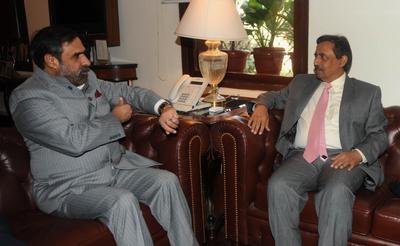From a strategic standpoint, any such event would entail significant political repercussions. This was seen in Indonesia after a 9.1-magnitude megaquake shook the Indian Ocean from its epicentre off northern Sumatra on 26 December 2004. The following tsunami was so devastating it led to the deaths of 100,000 people in Aceh and a total loss of 230,000 lives across 14 countries in the Indian Ocean rim. The impact was so severely shocking that it precipitated the end of Aceh’s long-running political conflict.
The devastation forced the Acehnese separatists into a ceasefire, while humanitarian pressure compelled the country’s central government, under President Yudhoyono, to reciprocate with a political solution to the Aceh crisis. This led to a peace agreement in 2005 and Aceh’s eventual autonomy as a special territory. In a nutshell, one of the most intractable separatist problems in Southeast Asia was finally resolved, but only after nature’s devastating ‘intervention’.
South Asia, too, has faced humanitarian disasters of enormous scale. In October 2005, a 7.6-magnitude earthquake, with its epicentre 19 kilometres from Muzaffarabad in the Pakistani portion of Kashmir, resulted in over 80,000 deaths. Fatalities on a lower scale occurred in India and Afghanistan as well. But out of the calamity came some positive changes in the India-Pakistan relationship. India quickly offered disaster relief and Pakistan accepted. Indian soldiers crossed the Line of Control (LoC) to assist Pakistani counterparts in their mitigation efforts, and India agreed to allow Pakistani helicopters to cross the LoC to hasten assistance to the quake-affected.
But there were limits imposed by inter-state rivalry. For example, Indian helicopters were not permitted to fly into Pakistani territory for fear they might engage in reconnaissance and India was unwilling to allow free movement across the LoC, fearing terrorists would take advantage. Clearly, the long-standing bitterness between the two countries was not about to ease even in the shadow of a great humanitarian catastrophe.
Still, these first hesitant moves did begin to sow the seeds of a fresh beginning. In months to follow, Islamabad and New Delhi began negotiations that led to unprecedented cooperation. Trade links across the LoC were enhanced, people’s movements by bus and train were made easier, and both sides agreed that a ‘soft border’ was a viable proposition. But the approaching detente crumbled as Pakistan’s President Pervez Musharraf slid into a domestic political crisis from which he was never to emerge. Tensions over their competition in Afghanistan rose and the commando-style attack on Mumbai by Pakistan-based terrorists that killed 160 people led to a fresh chill in the relationship.
One can only hope that it will not take another humanitarian crisis to bring about a turning point in the Pakistan-India relationship. And there are numerous reasons to be optimistic.
First, and most fundamentally, the advent of nuclear weapons brings to the forefront the stark reality that the struggle over Kashmir could precipitate a much bigger disaster than an earthquake if war were to break out.
Second, terrorist groups are exploiting the widening scope available to them and gaining substantial ground within Pakistan, which has been rocked by political instability, economic crisis and escalating daily violence.
Third, the Pakistan Army, long claimed to be the nation’s chief stabilising force, is clearly unable to offer daily security to its people. This raises the hope that it will retreat into the barracks and a civilian-led entente with India will appear on the cards.
Fourth, for all its own failings — like endemic corruption and an inability to effectively deal with a still-growing Maoist insurgency — India is widening its economic and strategic gap with Pakistan. This makes it less and less amenable to pressure on territorial disputes.
And fifth, with China a somewhat reluctant ally as far as financial backing is concerned, and the US holding back on the dispensing of aid, Pakistan’s economic choices are limited and the pressure for enhancing trade with India is increasing.
As a result, there is a growing sense that a turning point is close at hand. The two sides are in a position to focus on common gains — mainly from an improved economic relationship and a renewed effort to create a ‘soft border’ in Kashmir. And on the military side, confidence-building to minimise the risk of inadvertent war, already an established process, can move forward with talks on restraining the risks associated with short-range ballistic missiles and cruise missiles.
Rajesh Basrur and Yang Razali Kassim are both Senior Fellows at the S Rajaratnam School of International Studies, Nanyang Technological University.
A version of this article was first published here as RSIS Commentary No. 151/2011, 18 October 2011.

